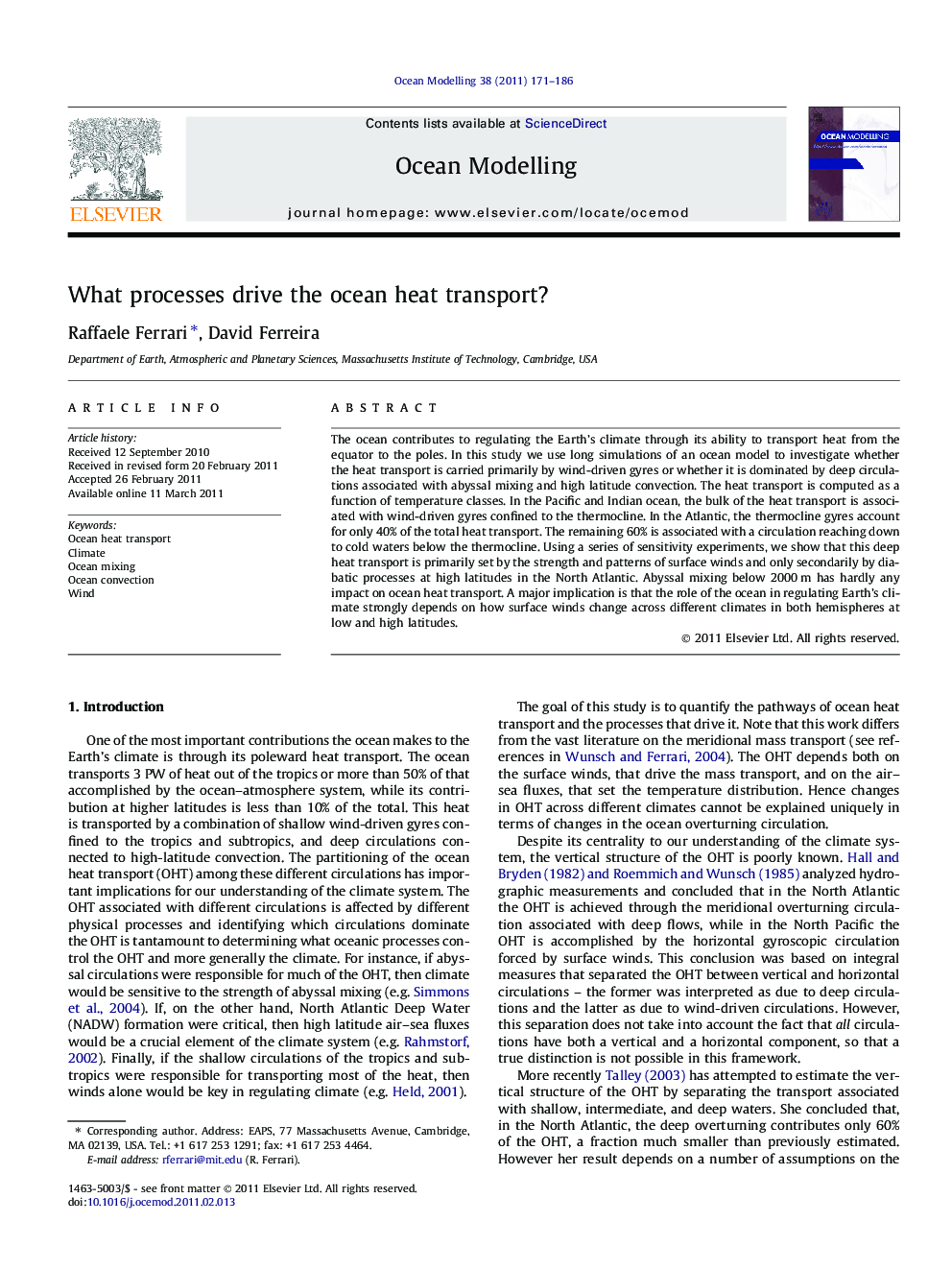| Article ID | Journal | Published Year | Pages | File Type |
|---|---|---|---|---|
| 4552293 | Ocean Modelling | 2011 | 16 Pages |
The ocean contributes to regulating the Earth’s climate through its ability to transport heat from the equator to the poles. In this study we use long simulations of an ocean model to investigate whether the heat transport is carried primarily by wind-driven gyres or whether it is dominated by deep circulations associated with abyssal mixing and high latitude convection. The heat transport is computed as a function of temperature classes. In the Pacific and Indian ocean, the bulk of the heat transport is associated with wind-driven gyres confined to the thermocline. In the Atlantic, the thermocline gyres account for only 40% of the total heat transport. The remaining 60% is associated with a circulation reaching down to cold waters below the thermocline. Using a series of sensitivity experiments, we show that this deep heat transport is primarily set by the strength and patterns of surface winds and only secondarily by diabatic processes at high latitudes in the North Atlantic. Abyssal mixing below 2000 m has hardly any impact on ocean heat transport. A major implication is that the role of the ocean in regulating Earth’s climate strongly depends on how surface winds change across different climates in both hemispheres at low and high latitudes.
► The heatfunction diagnostic shows the pathways of heat into the ocean. ► Abyssal mixing does not affect the ocean heat transport. ► The ocean heat transport is sensitive to mixing at the base of the thermocline. ► The ocean heat transport is linearly proportional to the surface wind stress. ► The ocean heat transport across is primarily sensitive to winds and secondarily to air-sea fluxes.
